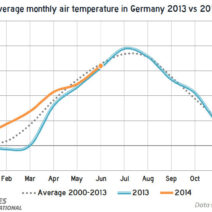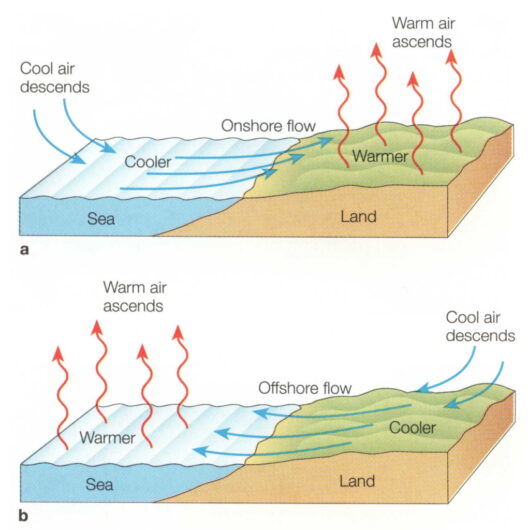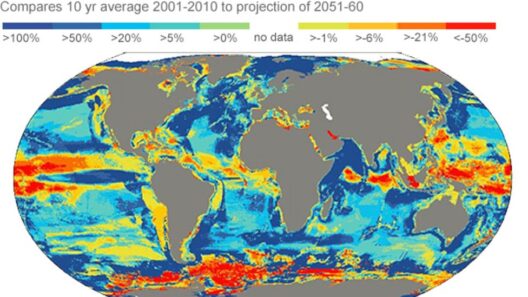The impact of climate change extends far beyond environmental degradation; it poses an alarming threat to human life itself. The escalating incidence of weather extremes, rising sea levels, and shifting climate patterns are inexorably linked to increased mortality rates globally. This discourse aims to elucidate the magnitude of deaths attributable to climate change, revealing the multifaceted dimensions of this crisis.
To comprehend the gravity of climate change-related fatalities, one must appreciate the myriad ways in which climate alteration influences human health. Heatwaves are perhaps the most immediate and visible danger. With rising global temperatures, the frequency and intensity of heatwaves are intensifying, leading to a surge in heat-related illnesses and fatalities. Vulnerable populations, such as the elderly, infants, and those with pre-existing health conditions, face heightened risks. The phenomenon of urban heat islands exacerbates this situation, as cities retain more heat than their rural counterparts.
Moreover, the interplay between climate change and vector-borne diseases is a critical area of concern. As temperatures rise, the geographical distribution of disease-carrying vectors—such as mosquitoes, ticks, and fleas—shifts, leading to the proliferation of diseases like malaria, dengue fever, and Lyme disease in regions previously deemed inhospitable. This shift not only endangers public health but also stymies efforts to eradicate existing endemic diseases.
In addition to direct health impacts, indirect consequences of climate change are equally troubling. The disruption of food production due to altered precipitation patterns, extreme weather events, and diminishing arable land translates to malnutrition and food scarcity. These trends result in higher mortality rates, particularly among susceptible populations in developing nations. Food insecurity emerges as a silent killer, with malnourished individuals more vulnerable to diseases and ailments.
Another concomitant issue is the displacement of populations due to extreme weather events, such as hurricanes, floods, and wildfires. According to projections, millions of individuals may be forced to migrate due to climate-induced displacement, leading to conflicts over resources and increased mortality rates in refugee populations. Forced migrations not only challenge the capacity of host regions to accommodate newcomers but also expose displaced individuals to health risks, including infectious diseases and mental health issues. This precarious existence often culminates in unnecessary fatalities.
The interrelatedness of these factors contributes to a significant and sobering statistic: a disproportionate number of deaths are being linked to climate change-related events. Global studies estimate that hundreds of thousands of deaths annually are attributable to climate-related factors, and as the situation escalates, this number may multiply. The World Health Organization (WHO) forecasts that climate change will cause an additional 250,000 deaths per year between 2030 and 2050 due to increased malnutrition, vector-borne disease, and heat exposure.
It is imperative to consider the socio-economic factors that exacerbate the health impacts of climate change. Marginalized and impoverished communities often bear the brunt of climate-related mortality. These groups frequently lack access to adequate healthcare, clean water, and nutritious food, compounding the effects of climate change on their lives. Public health systems in many regions remain underfunded and ill-equipped to cope with the increasingly complex health challenges posed by climate dynamics.
A pivotal consideration in this discussion is the concept of resilience—how societies adapt and respond to climate-induced threats. Building resilience within communities encompasses improving infrastructure, enhancing healthcare systems, and fostering sustainable agricultural practices. Public awareness and education are paramount in developing a well-informed populace equipped to face the realities of climate change. Effective communication of climate risks and preventive measures is essential to mitigate health impacts.
In the face of this multifarious threat, policy interventions must be proactive and robust. Governments must prioritize climate action, focusing on emission reductions, renewable energy investments, and sustainable land-use policies. Comprehensive strategies should integrate health and environmental policies, ensuring that public health considerations inform climate policies. International cooperation is also vital, as climate change knows no borders; the health of one nation can profoundly impact the welfare of another.
Furthermore, there is a pressing need for scientific research to untangle the complexities of climate change and its effects on human health. Continued investment in research can yield insights that inform strategies to minimize mortality rates linked to climate change. Understanding the epidemiological trends associated with climate change will enable policymakers to implement targeted interventions and allocate resources more effectively.
In summary, the costs of climate change extend far beyond economic implications; they encompass the loss of lives, particularly among the most vulnerable populations. As this discourse illustrates, the intertwining threads of heat-related deaths, disease proliferation, food insecurity, and forced migration present an urgent call to action. It is within our collective capacity to avert this grim reality through concerted efforts in policy, education, and research. The time to act is now; humanity’s survival hinges on our response to the existential threat posed by climate change.




